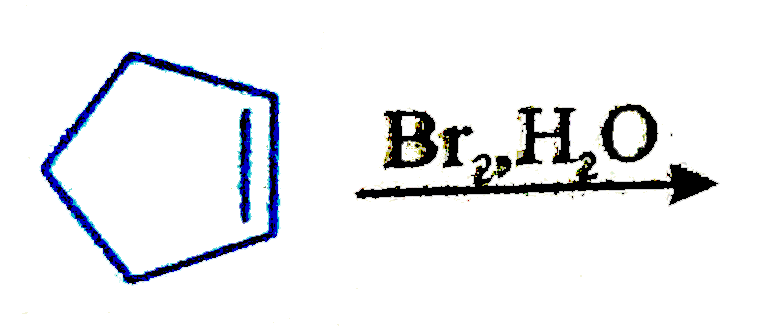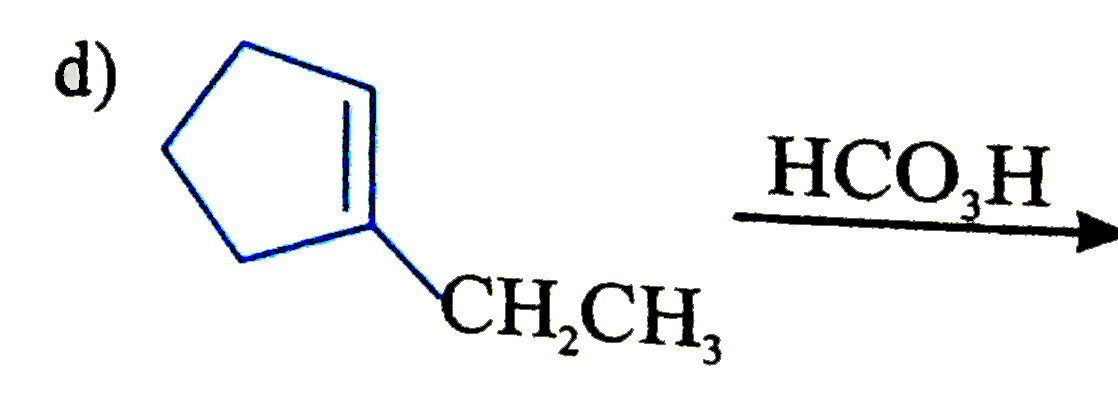Which of the following reactions give benzophenone
2C6H6+CCI4(i)AICI3−−−−−→(ii)H2O
C6H6+C6H5COCIAICI3−−−→
o−CH3C6H4COC6H5heat−−→
o−HOOC−C6H4−COC6H5Cu−−−→260∘C
The correct Answer is:B, D
To determine which of the given reactions yield benzophenone, we need to analyze each option step by step.
1. Identify Benzophenone:
Benzophenone is represented by the formula C6H5C(=O)C6H5, which consists of two phenyl groups (C6H5) attached to a carbonyl group (C=O).
2. Evaluate Option 1:
The reaction involves benzene (C6H6) with CCl4 and AlCl3 followed by hydrolysis.
- In this reaction, CCl4 acts as a source of the electrophile (CCl3+).
- The CCl3+ carbocation can react with benzene to form a chlorinated benzene derivative.
- Upon hydrolysis, this chlorinated compound can be converted into benzophenone through the elimination of HCl and the introduction of a carbonyl group.
Conclusion for Option 1: Benzophenone is formed.
3. Evaluate Option 2:
The reaction involves benzene (C6H6) with COCl2 (phosgene) and AlCl3.
- This is a Friedel-Crafts acylation reaction.
- The AlCl3 catalyst activates the COCl2, generating the acylium ion (C6H5C(=O)+).
- The acylium ion can then react with benzene to form benzophenone.
Conclusion for Option 2: Benzophenone is formed.
4. Evaluate Option 3:
The reaction involves ortho-substituted phenyl ketone with a methyl group (C6H4(CO)C6H5).
- This structure indicates that there is a methyl group ortho to the carbonyl group.
- Heating this compound does not lead to the formation of benzophenone, as the presence of the methyl group prevents the necessary rearrangement or elimination to yield benzophenone.
Conclusion for Option 3: Benzophenone is NOT formed.
5. Final Conclusion:
Benzophenone is formed in options 1 and 2, but not in option 3.
Summary of Results:
- Option 1: Benzophenone is formed.
- Option 2: Benzophenone is formed.
- Option 3: Benzophenone is NOT formed.
Benzophenone is represented by the formula C6H5C(=O)C6H5, which consists of two phenyl groups (C6H5) attached to a carbonyl group (C=O).
The reaction involves benzene (C6H6) with CCl4 and AlCl3 followed by hydrolysis.
- In this reaction, CCl4 acts as a source of the electrophile (CCl3+).
- The CCl3+ carbocation can react with benzene to form a chlorinated benzene derivative.
- Upon hydrolysis, this chlorinated compound can be converted into benzophenone through the elimination of HCl and the introduction of a carbonyl group.
The reaction involves benzene (C6H6) with COCl2 (phosgene) and AlCl3.
- This is a Friedel-Crafts acylation reaction.
- The AlCl3 catalyst activates the COCl2, generating the acylium ion (C6H5C(=O)+).
- The acylium ion can then react with benzene to form benzophenone.
The reaction involves ortho-substituted phenyl ketone with a methyl group (C6H4(CO)C6H5).
- This structure indicates that there is a methyl group ortho to the carbonyl group.
- Heating this compound does not lead to the formation of benzophenone, as the presence of the methyl group prevents the necessary rearrangement or elimination to yield benzophenone.
Benzophenone is formed in options 1 and 2, but not in option 3.
- Option 1: Benzophenone is formed.
- Option 2: Benzophenone is formed.
- Option 3: Benzophenone is NOT formed.
Topper's Solved these Questions
- ALDEHYDES AND KETONES BOOK - ERRORLESS CHAPTER - ALDEHYDES AND KETONES EXERCISE - JEE Section Reasoning type questions
4 Videos
- ALDEHYDES AND KETONES BOOK - ERRORLESS CHAPTER - ALDEHYDES AND KETONES EXERCISE - JEE Section Comprehension type questions
20 Videos
- ALDEHYDES AND KETONES BOOK - ERRORLESS CHAPTER - ALDEHYDES AND KETONES EXERCISE - JEE Section Only one choice correct answer
39 Videos
- ALCOHOL, PHENOL AND ETHERBOOK - ERRORLESS CHAPTER - ALCOHOL, PHENOL AND ETHEREXERCISE - JEE SECTION (JEE Advanced 2018) More than one choice correct answer
1 Video
- ANALYTICAL CHEMISTRYBOOK - ERRORLESS CHAPTER - ANALYTICAL CHEMISTRYEXERCISE - JEE Section (Only One Choice Answer)
36 Videos
Similar Questions
Knowledge Check
Which of the following reaction gives ethane ?
AC2H5Cl+Mgdryether−−−−→BC2H5Cl+LiAlH4→CC2H5Cl+C2H5ONa→DCHCl3Ag powder−−−−−→ΔWhich of the following reactions will give propane ?
ACH3CH2CH2ClMg/ether−−−−−−→H2OBCH3COClCH3MgX−−−−−−→H2OCCH3CH=CH2B2H6−−−−−−−−−→CH3COOHDCH3C∣OHH−CH3P/HI−−−→Which of the following reaction gives the non-resolvable product?
A B
B C
C D
D
Which of the following reaction will give an alkyne?
View SolutionWhich of the following reaction gives by isocyanide
View SolutionWhich of the following reaction(s) give white precipitate?
View SolutionWhich of the following reactions will not give the anhydrous AlCl3 ?
View SolutionWhich of the following reactions would give propanal ?
View Solution